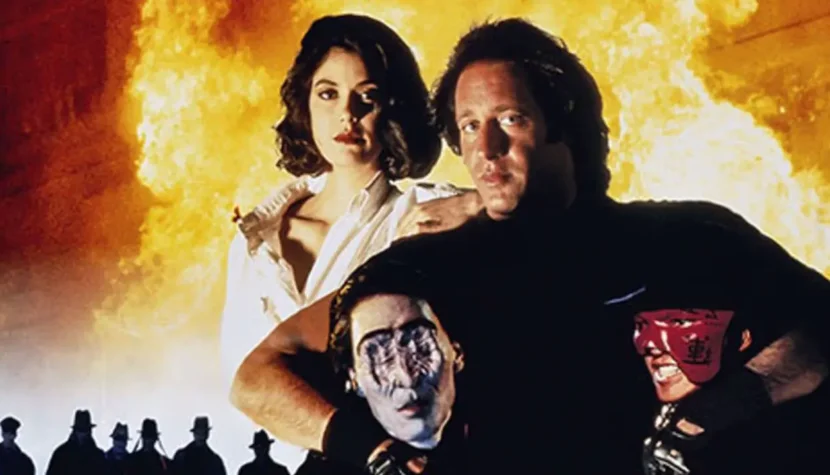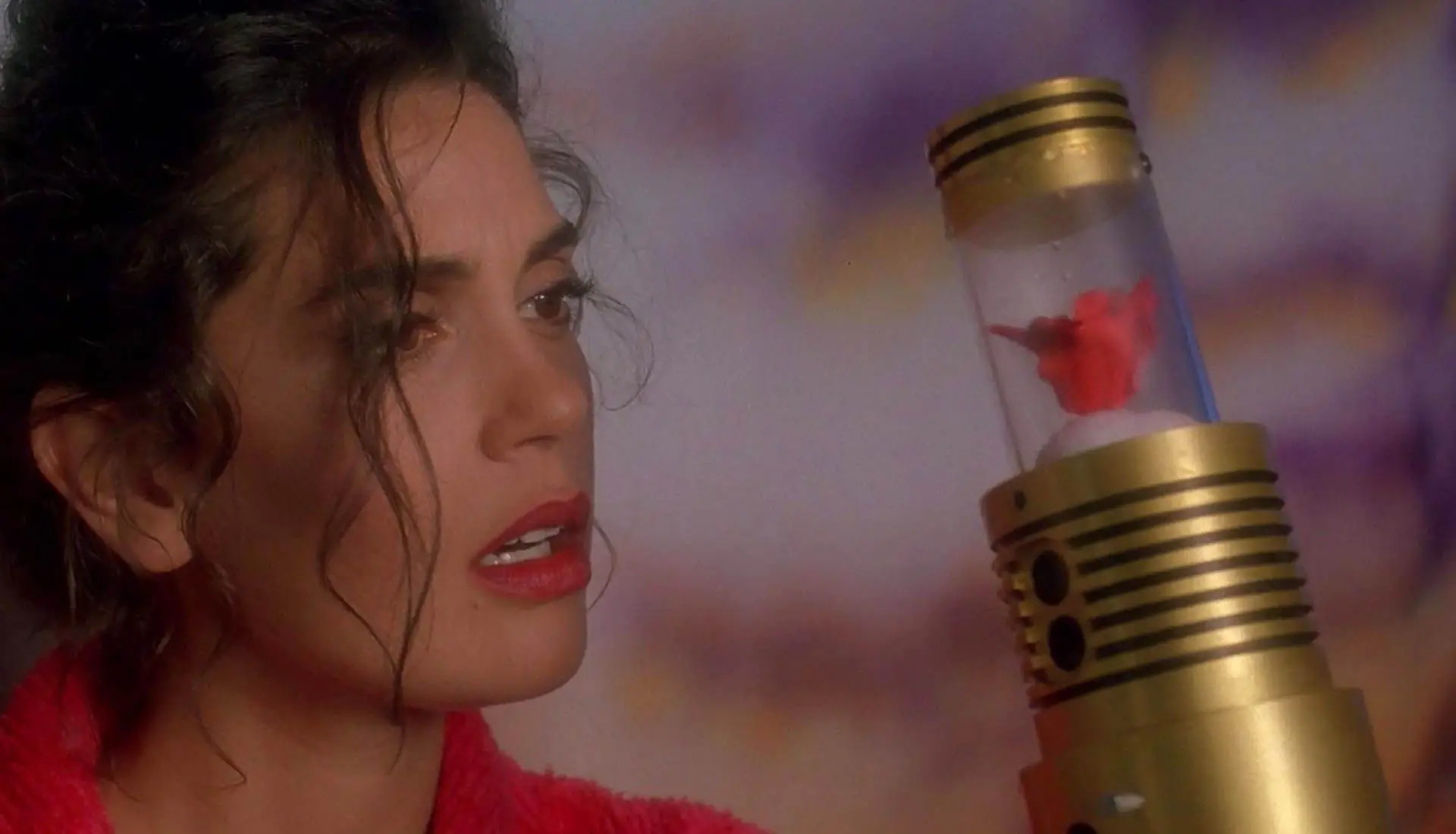BRAIN SMASHER… A LOVE STORY. Pyun dreamed of a SF comedy, he ended up with was a fantasy comedy.

When it comes to specifics, there are also elements of science fiction, but in “Brain Smasher… A Love Story” the boundary is very thin. Generally, in Albert Pyun’s films, the sci-fi genre is treated very unscientifically. It’s a genre in itself, lying somewhere between fantasy and space opera. Encountering Pyun’s work leaves a lasting mark on the imagination. Every film is an aesthetic and narrative experience, filled simultaneously with surprise, disbelief, distaste, and the desire to delve deeper into the director’s world. A single VHS hit like “Cyborg” is just the tip of a reality that, years later, I am rediscovering as if anew, with a different set of experiences but with the same vivid love for that 80s style of production, which Albert Pyun pursued with such dedication and tenacity.
Albert Pyun made a light action-comedy with fantastic elements. The production heavily echoes “Big Trouble in Little China”, but it’s clearly made on a smaller budget, which absolutely doesn’t mean it’s clichéd. There are far fewer special effects. Pyun focused more on stunt work, and it’s done quite well. One can only wonder why the walls in Portland houses are made of plywood, and even the ones in old apartment buildings. You probably won’t recognize any of the actors, except for the brightly shining star Teri Hatcher, best known from “Tango & Cash”. The style is interesting, with the action taking place mostly at night on the neon-lit streets of Portland. The crew approached the task skillfully. Without having great resources, they made excellent use of the existing surroundings, embellishing them with truly atmospheric music. It was composed by Tony Riparetti, Pyun’s longtime collaborator, who had already proven himself back in the 80s when the director was making “Radioactive Dreams”. Another permanent member of the team was producer Tom Karnowski, who helped Pyun stick to his “standards.” The cherry on top turned out to be an iconic actor for science fiction, Brion James. This time he played a dim-witted cop, though dressed in a neo-noir style. Such references are always intentional with Pyun. This time, the nod is to “Blade Runner”, whose aesthetic influenced “Brain Smasher… A Love Story” in a prominent and ambitious way. The scene in the underground nightclub with the overweight stripper is a parody of the sequence in “Blade Runner”, where Rick Deckard, posing as an “animal rights advocate,” enters Zhora’s dressing room, the dancer with the artificial snake who was later controversially killed by Ford.

There are many more such touches in Pyun’s work, and “Brain Smasher… A Love Story” is no exception. The emotions are always enhanced by a rich soundtrack. Modern high-budget productions could learn from Riparetti how to create a musical backdrop that can function as a standalone piece without the film frames it adorns. And since Pyun always liked eclecticism, the music is multi-genre—pop, electro, disco, rock, country—all arranged in a modern way, melodically memorable, yet not overpowering the visuals. Such balance is rare in today’s films, where it seems that louder drums and strings are always thought to be better and must serve as the backdrop to a tearful fight for the hero’s honor and all of humanity. As for the drama, although “Brain Smasher” is more of a comedy, the main driving force is the bouncer Ed Molloy (Andrew Dice Clay) and Wu (Yuji Okumoto). Within these characters, you’ll find plenty of overall and insightful reflections on humanity, social relationships, and love. The bouncer and the model, whom everyone stereotypically considers dumb, carry the plot on their shoulders, which should have been at least 30 minutes longer, with the mystery of the red lotus explained at least a bit. Pyun, however, ends the film very scientifically, not with fantasy. We are supposed to believe only in what is verified, not what has been maintained as myth for over 2000 years. Because of his naive belief in supernatural powers, Wu wasted his warrior skills and his entire life.

The film’s plot is based on a pursuit, which the antagonist leads dramatically yet humorously, and a chase similarly carried out by the one-of-a-kind action movie duo—a model and a bouncer from a seedy club in Portland. The object of Wu’s desire is the mysterious red lotus, an ancient flower of immense power. You can gain its power by eating it. However, the film never explains the nature of that power. It is rather a metaphor for humanity’s pursuit of power, the desire for which can bring the entire good world to ruin, both morally and physically. Is it worth it? The answer seems obvious. It’s also worth watching “Brain Smasher” and finding out for yourself which scene best reflects this peculiar title.

